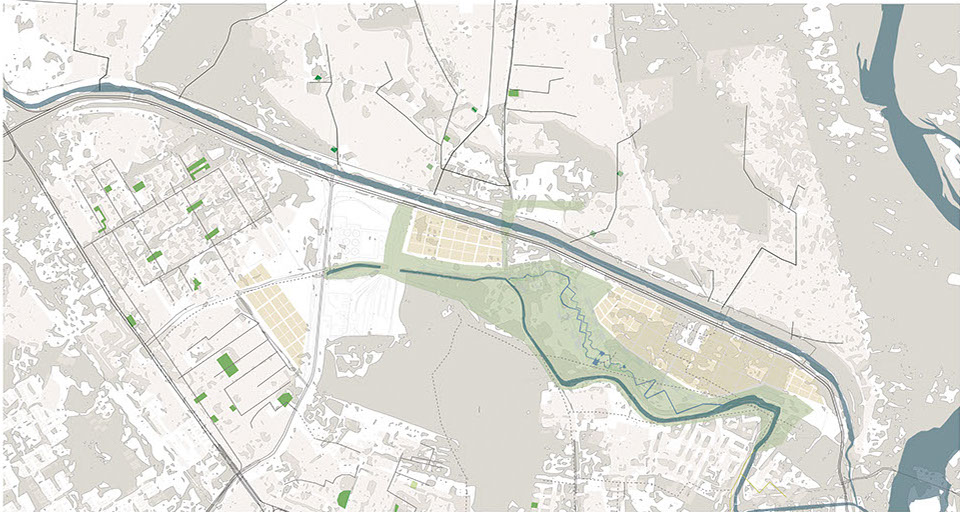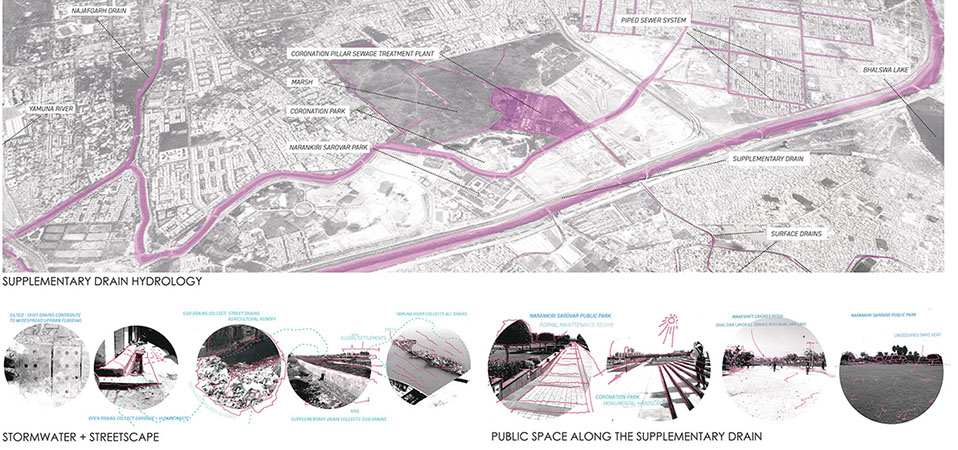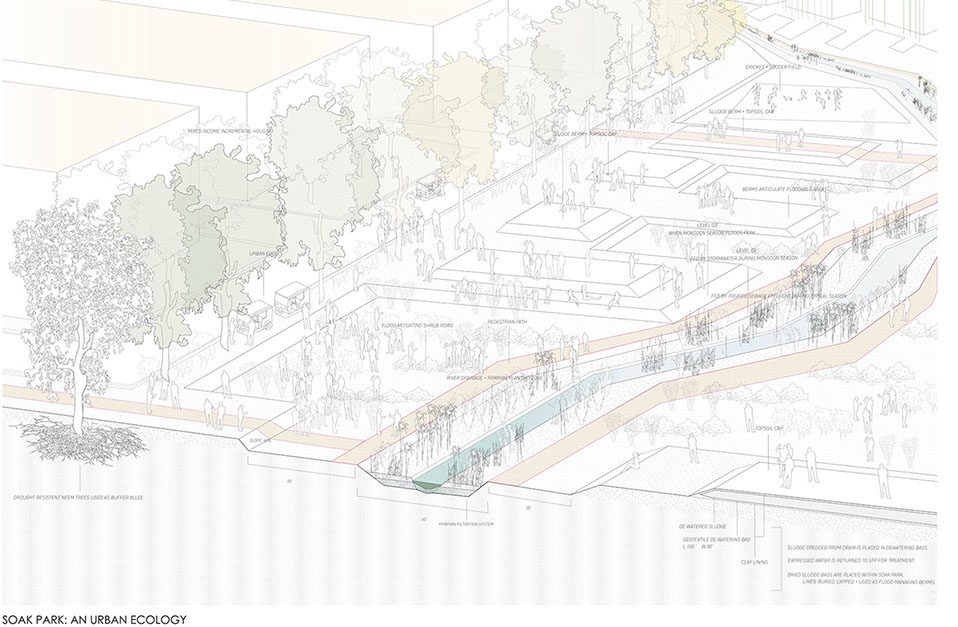As a partially sewered metropolitan region, New Delhi faces a number of contamination threats. Sewage and stormwater share the same system of open + closed drains, leading to overflow during the monsoon season and pollution of rainwater reaching the Yamuna River. The ongoing sewer expansion project in New Delhi effectively removes raw sewage from drains, providing a platform for a separated stormwater + sewage infrastructures. Soak parks counteract the massive, centralized systems of New Delhi through a hybrid infrastructure of public space, active planting, and piped networks, incrementally installed alongside the sewage system expansion. A centralized soak park at the urban scale works in conjunction with decentralized soak parks at the neighborhood scale to receive, redirect, filter and detain storm water during the monsoon season. In the overscaled, monumental hardscapes that have developed along side New Delhi’s rapid population growth, the soak park is a responsive, defensible public space that flexibly responds to both environmental and social fluxes.

Hybrid Wastewater Infrastructure of Northern New Delhi: Soak Park Network











